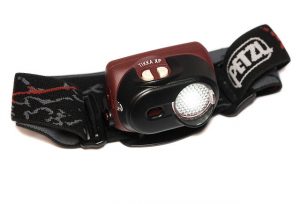
A key piece of gear for any climber is a headlamp, which can provide essential illumination in low-light conditions. However, not all headlamps are created equal, and choosing the right headlamp style can have a significant impact on your climbing experience.
Choosing the right headlamp for your climbing needs should also take into consideration factors such as brightness, battery life, weight, durability, and comfort. We hope this information will give you a better understanding of which headlamp style is right for you, and help you choose the right one to tackle your next climbing adventure.
Types of Headlamp Styles for Climbing
There are three main headlamp styles that are popular among climbers: traditional, hybrid, and modular headlamps.
Each headlamp style has its own unique features and benefits, and understanding the differences between them can help you make an informed decision.
Let’s explore the advantages and disadvantages of the traditional, hybrid, and modular headlamp styles for climbing.
Traditional Headlamps
Traditional headlamps are the simplest and most affordable option, featuring a single light beam and a compact design.
One of the best selling traditional headlamps for climbing is the Black Diamond Spot.
The Black Diamond Spot is a traditional style climbing headlamp that offers a compact design, 300 lumens of brightness, and a long battery life of up to 200 hours on low setting. It also features a waterproof construction and an adjustable headband for a comfortable fit. Its compact size and easy-to-use interface make it a popular choice among climbers looking for a simple and reliable headlamp.
Advantages of traditional headlamps
- Affordable
- Lightweight
- Easy to Use
Disadvantage of traditional headlamps
- Limited battery life
- Limited brightness
- Limited adjustability
Hybrid Headlamps
Hybrid headlamps offer a combination of features from traditional and high-performance headlamps, such as brighter illumination and longer battery life.
The Petzl Actik Core is one of the best selling hybrid headlamps for climbing.
The Petzl Actik Core is a lightweight and compact hybrid headlamp that offers a combination of high performance and affordability, with a maximum brightness of 450 lumens and a rechargeable battery that lasts up to 130 hours on low setting. It also features red lighting for night vision, and a reflective headband for added visibility, making it a great choice for climbers who want a versatile and reliable headlamp without breaking the bank.
Advantages of hybrid headlamps
- Longer battery life
- Brighter light
- More adjustibility
Disadvantage of hybrid headlamps
- Heavier
- More expensive
- More complex to use
Modular Headlamps
Modular headlamps are the most versatile option, allowing for customization and the ability to swap out parts depending on your specific needs.
One of the best selling modular headlamps for climbing is the Black Diamond Icon.
The Black Diamond Icon offers a powerful maximum brightness of 500 lumens and a rechargeable battery that can last up to 70 hours on low setting. It also features a waterproof construction and a sturdy design that can withstand harsh conditions. Its modular design allows for customization, with the option to add on an extended battery pack or helmet mount. The Black Diamond Icon is a popular choice among climbers who want a highly versatile and powerful headlamp that can handle any climbing adventure.
Advantages of modular headlamps
- Customizable
- Versatile
- Easy to repair
Disadvantage of modular headlamps
- More expensive
- Heavier
- May require more maintenance
How to Choose the Right Headlamp for Climbing
In addition to consideration of the style of headlamp, there are other more general features to keep in mind when selecting a headlamp for climbing, such as:
Brightness: The brightness of a headlamp is measured in lumens. The higher the lumens, the brighter the light. For climbing, a headlamp with at least 150 lumens is recommended.
Battery life: Battery life can vary greatly depending on the headlamp. Consider how long you’ll be using the headlamp and choose one with a battery life that will last through your climb. Rechargeable batteries are also a great option to reduce waste and save money in the long run.
Weight: The weight of a headlamp can impact comfort and performance. Choose a headlamp that is lightweight and won’t weigh you down during your climb.
Durability: Climbing can be tough on gear, so choose a headlamp that is durable and can withstand the elements. Look for headlamps that are waterproof and shock-resistant.
Comfort: A headlamp that is uncomfortable to wear can be a distraction during your climb. Look for headlamps with adjustable straps and padding to ensure a comfortable fit.
Take a look at out more in-depth guide to choosing a climbing headlamp for more information on options for these headlamp features.
We hope this has helped give you an idea of the main differences between the different styles of climbing headlamps.
To sum things up:
- Traditional headlamps are lightweight and affordable, but may have limited features.
- Hybrid headlamps offer a good balance between performance and affordability, but may be heavier.
- Modular headlamps provide the most versatility, but can be more expensive and complex to use.
Traditional, hybrid, and modular headlamp styles each have their own unique features and benefits too.
In addition to understanding these headlamp style differences, considering factors such as brightness, battery life, weight, durability, and comfort, will help you make an informed decision for the perfect headlamp for you!


